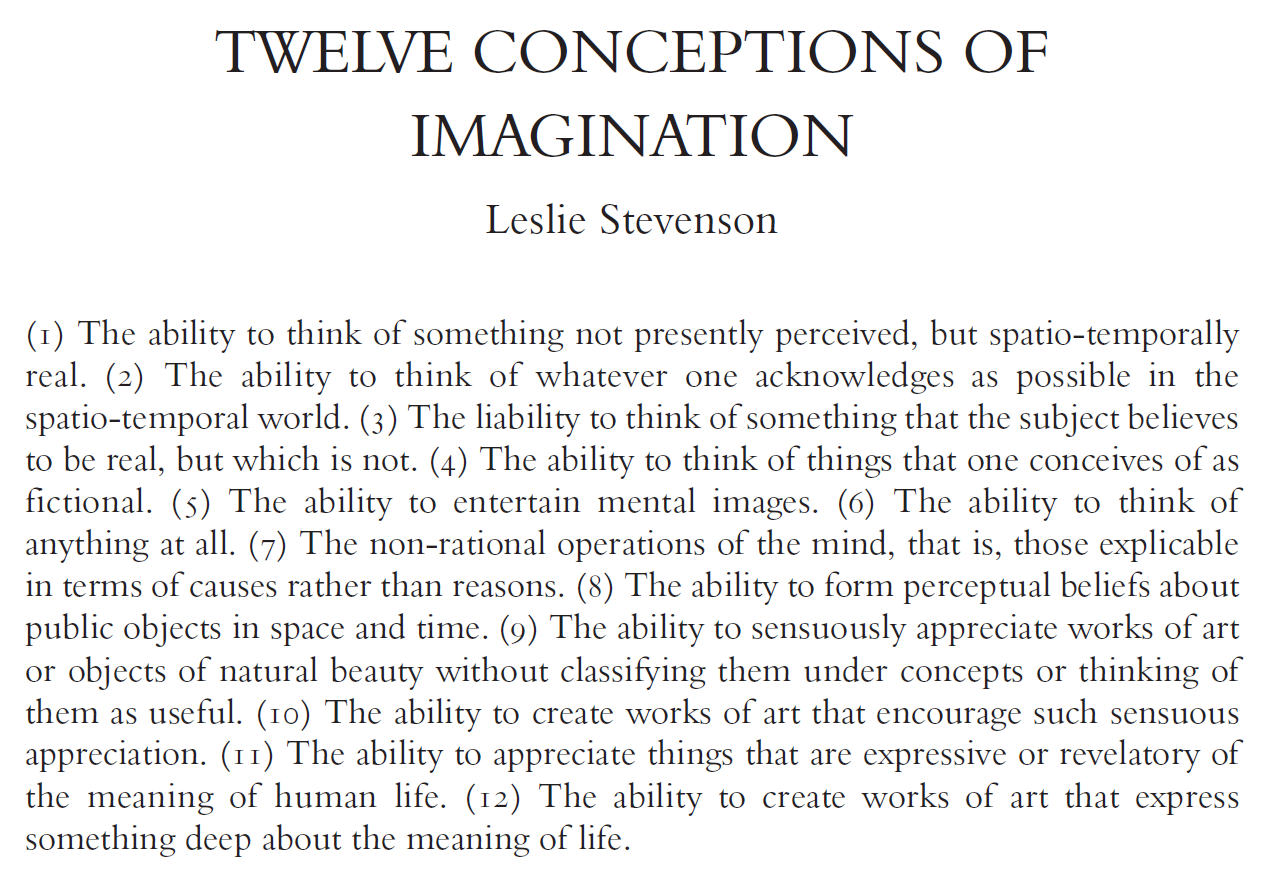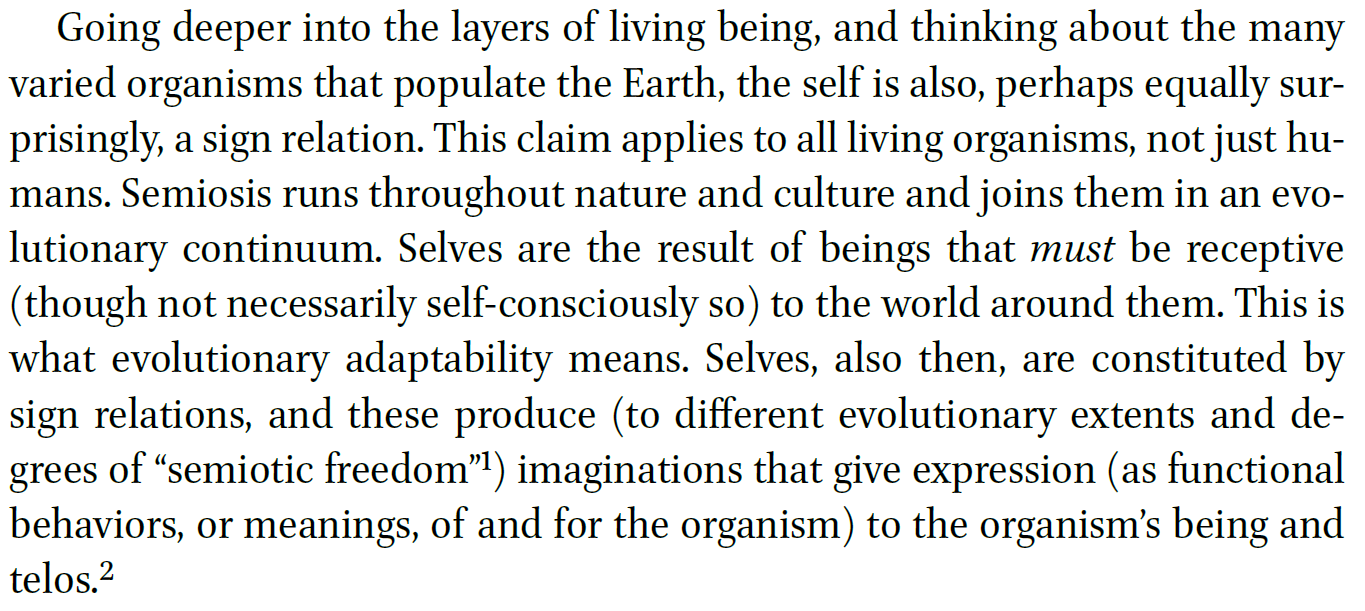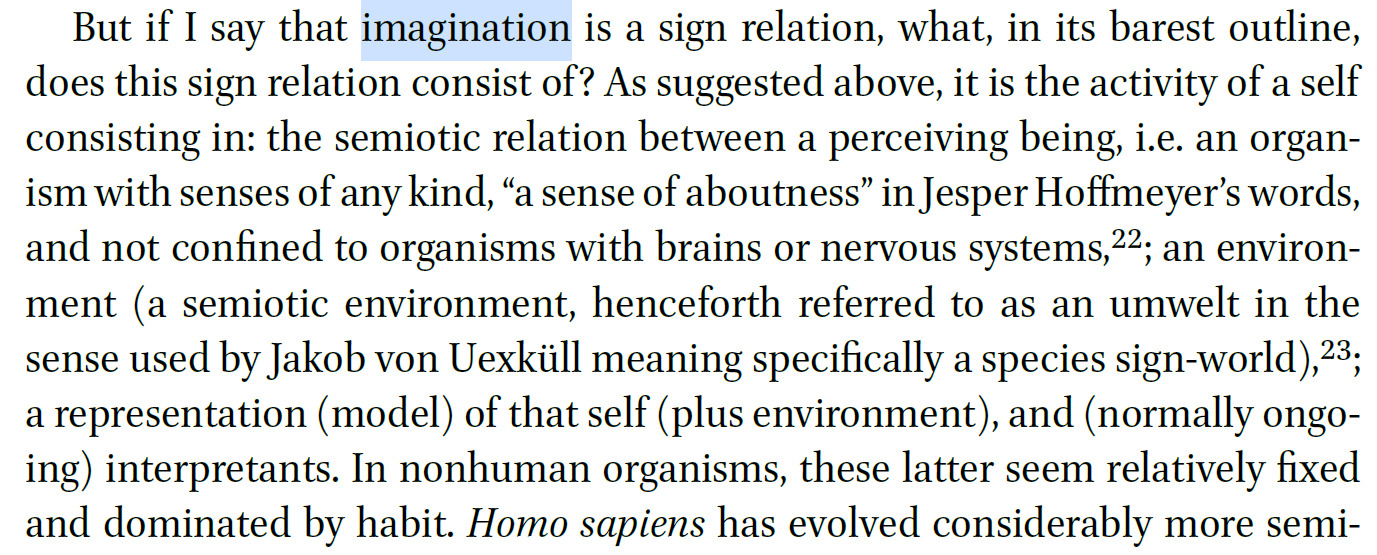Imagination
This not is about the concept of imagination.
Cf. Future, umwelt, biosemiotics.
The typical understanding is that imagination is a property of an individual human brain.
By contrast, we understand imagination as an epiphenomenon. An impression formed by an individual of an effect produced by a situated community. On this account, imagination is a virtual prototype of an alternative future produced by a community. Members of the community can share this imagination but nobody has the full access to it, nor is it a full account of what is possible. This is in parallel to umwelten, or partial subjective experiences of the real lived world. Different beings have different perceptual worlds. In the same way, they have different imagined worlds. This understanding does not presume that all participants to have the cognitive ability to forum mental images or similar internal representations. However, they can contribute and partake in this virtual prototype of the future, to various degrees.
Relevant Terms
- discursive imagination
Definitions
Typical definitions automatically presume that imagination is individual and human. Maybe some animals can have it. It relates to mental imagery, perception, memory, and dreaming. For example, Kind's handbook does not cover collective or distributed approaches to imagination.
Yet, in the human brain/organism there no one single process that counts as "imagining".
For a human-centric aggregations, see:

Stevenson, Leslie. ‘Twelve Conceptions of Imagination’. The British Journal of Aesthetics 43, no. 3 (2003): 238–59. https://doi.org/10/brjjxw.
Moral Imagination
Capacity to imagine how values and commitments will influence future experience, without enacting this experience. 1
Collective Imagination
- Same shared imagined object
- Same or similar contents and vehicles of representations (media or prompters)
- Jointly committing to imagining something as one mind (I would say not needed, only in humans?)
Szanto, Thomas. ‘Collective Imagination: A Normative Account 1’. In Imagination and Social Perspectives: Approaches from Phenomenology and Psychopathology, edited by Michela Summa, Thomas Fuchs, and Luca Vanzago, 223–46. New York: Routledge, 2017.
Walton, Kendall L. Mimesis as Make-Believe: On the Foundations of the Representational Arts. Cambridge, MA: Harvard University Press, 1990.
Nonhuman Imagination
Typical argument distinguish 'practical' imagination in animals vs 'symbolic' imagination in humans (Cassirer).
Imagination in Biosemiotics


Wheeler, Wendy. ‘Art and Imagination: The Evolution of Meanings’. In Imagination and Art: Explorations in Contemporary Theory, edited by Keith A. Moser and Ananta Charana Sukla, 503–34. Leiden: Brill, 2020.
“the process of message exchanges, or semiosis, is an indispensable characteristic of all terrestrial life forms”
Sebeok, Thomas A. A Sign Is Just a Sign. Boulder: NetLibrary, 1999.
Distributed Imagination
Holobiont, collectivity and symbiosis in biology and thus collective production of imagination but distributed entities.
Gilbert, Scott F., Jan Sapp, and Alfred I. Tauber. ‘A Symbiotic View of Life: We Have Never Been Individuals’. The Quarterly Review of Biology 87, no. 4 (2012): 325–41. https://doi.org/10/gfz64k.
Situated Imagination
History of Imagination
The idea that imagination is a desirable quality is rather new. It is perhaps introduced by Shakespeare in plays such as Midsummer Night's Dear where imagination and its symbols such as fairies are rethought. BBC Radio 4 - In Our Time, A Midsummer Night's Dream
The Christian tradition treated imagination with suspicion as something that can only go astray without the benevolent guidance of God.
The contemporary idea of imagination is inherited from the Romantics who in turn got their ideas from Shakespeare.
Of course, this is a very Western and Anglo interpretation.
Queues and Waiting
Queues as a form of meaningful #inefficiency (Private) or #redundancy (Private) in nature. Relevant to the question of moral imagination and Ecocentric Design.
Queues are but one model of matching the needs with resources. One can visuals this as metabolism. As ecology. The distribution of rights is then done based on statistical models.
What are the intentional functions of waiting?
Waiting and never getting as fundamental features of living in the temporal world.
References
Kind, Amy, ed. The Routledge Handbook of Philosophy of Imagination. London: Routledge, 2016.
Footnotes
Johnson, Mark. ‘Moral Imagination’. In The Routledge Handbook of Philosophy of Imagination, edited by Amy Kind, 355–67. London: Routledge, 2016.˄
Backlinks